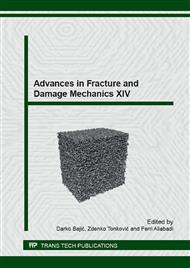p.221
p.225
p.229
p.233
p.237
p.241
p.245
p.249
p.253
Damage Model for Degradation Induced by Volcanic Ash Deposition on Thermal Barrier Coatings
Abstract:
The importance of a land-based gas turbine has been increased in order to maintain energy security in Japan. Since our country has been always exposed to a natural disaster, it is necessary to consider about influence of air intake of volcanic ash spouted from a volcanic explosion on high-temperature components in gas turbine as well as vibration by an earthquake event. In this study, a high-temperature exposure tests were conducted for 8YZ/CoNiCrAlY/IN-738LC sample on which volcanic ash was deposited. Here, we selected the natural ash picked up from Shin-moe mountain where had been exploded in 2011. As a result, it was found that the top coating was peeled completely off at the exposure condition 1273 K for 100 hours, which means that volcanic ash deposition brings about some acceleration for the delamination life of TBC. The microstructure observation after the exposure tests revealed that Si and Ca contents involved in the volcanic ash was detected inside open-pores. Thus, it was identified that those ashes infiltrated into open pores along splat boundaries under a high-temperature exposure environment. The damage model for explaining degradation induced by volcanic ash deposition was developed based upon micromechanics. The formulae for constitutive equation of TBC was done by considering about influence of both crystal distortion by tetragonal to monoclinic phase transformation and thermal shrinking by temperature drop in the heat exposure treatment. Residual stress and interfacial energy were evaluated using the proposed constitutive equation in order to clarify degradation mechanisms for ash attack to TBC.
Info:
Periodical:
Pages:
237-240
Citation:
Online since:
September 2015
Authors:
Keywords:
Price:
Сopyright:
© 2016 Trans Tech Publications Ltd. All Rights Reserved
Share:
Citation:


